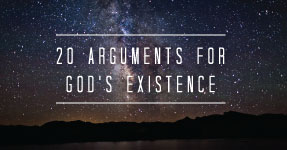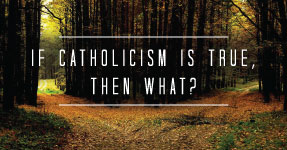The Stillbirth of Science in India
by Dr. Stacy Trasancos
Filed under Christianity and Science
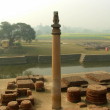
NOTE: Today we continue our weekly series of essays by Dr. Stacy Trasancos on the "stillbirths" of science. They're based on Fr. Stanley L. Jaki's research into the theological history of science in the ancient cultures of Egypt, China, India, Babylon, Greece, and Arabia. See past articles here. The decimal system and notation developed in ancient India between the fourth and seventh centuries represents “the most noteworthy single contribution of ancient India to science and its importance... Read More
The Stillbirth of Science in China
by Dr. Stacy Trasancos
Filed under Christianity and Science
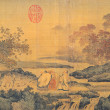
NOTE: Today we're continuing our weekly series of essays by Dr. Stacy Trasancos on the "stillbirths" of science. They're based on Fr. Stanley L. Jaki's research into the theological history of science in the ancient cultures of Egypt, China, India, Babylon, Greece, and Arabia. See past articles here. There is so much written about China’s rich and illustrious past that no case could ever be made—from the Shang Dynasty (1523–1028 B.C.) to the Ch’ing Dynasty (A.D. 1644–1912)—that... Read More
The Stillbirth of Science in Ancient Egypt
by Dr. Stacy Trasancos
Filed under Christianity and Science
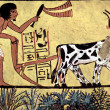
NOTE: For the next six Fridays, Strange Notions will present a series of essays by Dr. Stacy Trasancos on the "stillbirths" of science. They're based on Fr. Stanley L. Jaki's research into the theological history of science in the ancient cultures of Egypt, China, India, Babylon, Greece, and Arabia. The first stillbirth Fr. Stanley L. Jaki discussed in the Savior of Science is the stillbirth of science in Egypt, “an Egypt to be buried in the sand.” In ancient Egypt (from about 3000... Read More
From Faith Came Science: The Condemnations of 1277
by Dr. Stacy Trasancos
Filed under Christianity and Science

In 1277, Étienne Tempier, the Bishop of Paris, issued a list of 219 condemned propositions relating to details of Aristotelian texts that were irreconcilable with the Christian worldview. These propositions were not binding on Christians, but served as a guide for the scholars at the University of Paris. The decree largely dealt with the eternity of the world and creation. The Condemned Propositions The propositions are often referenced by historians of science, and their intent and effects... Read More
Bill Nye, Ken Ham, and the Catholic Third Way
by Dr. Stacy Trasancos
Filed under Evolution
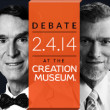
Did you watch the big debate last night between Ken Ham and Bill Nye? It was an excellent exchange with good points made on both sides, but decidedly missing from the debate was the fuller and traditional Catholic view. Thus for the purpose of our dialogue here at Strange Notions, I'd like to explore the "third way" absent from last night's event. How are Catholics taught to view the world? To quote the apologist Frank Sheed, in the very beginning of his book Theology and Sanity: “There is the... Read More
The Opening of the Scientific Mind
by Dr. Stacy Trasancos
Filed under Science

David Gelernter wrote an evocative essay for Commentary Magazine (cleverly) titled "The Closing of the Scientific Mind." His essay was a summary of conflicts in modern "philosophy of mind." He criticized the "bullying" against atheist Thomas Nagel who concluded that Darwinian evolution is insufficient to explain consciousness and who was "unwilling" in Gelernter's opinion "to express sufficient hatred of religion to satisfy other atheists." Then Gelernter discussed the "roboticism" of Ray Kurzweil,... Read More
Skeptic Benjamin Radford on the Fátima Miracle
by Dr. Stacy Trasancos
Filed under The Existence of God
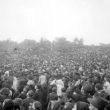
Paranormal investigator Benjamin Radford has written a piece for Live Science on the The Lady of Fátima & the Miracle of the Sun. Mr. Radford is the deputy editor of Skeptical Inquirer science magazine and a Research Fellow with the non-profit educational organization the Committee for Skeptical Inquiry. Mr. Radford answers the question: What really happened at Fátima? On October 13, 1917, between 30,000 to 100,000 people gathered near Fátima,... Read More
Free-Thinking: Doctrine or Illusion?
by Dr. Stacy Trasancos
Filed under Anthropology

Recently there was an excellent question in the Strange Notions comment boxes from Rob Tish. He wanted to know what the Bible means when it says God created man in His own image: "If God is so fundamentally and essentially different from us, then in what sense are we made in His image?" In a word: We are free-thinkers. Since invoking that word requires some explanation, the response is three-fold. First is the answer to Rob's question, with explanation and reference to the Catechism of the Catholic... Read More
Did Pope Benedict Really Dismiss Evolution as ‘Science Fiction’?
by Dr. Stacy Trasancos
Filed under Evolution
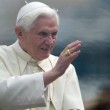
In a recent letter to Piergiorgio Odifreddi, Italian atheist and mathematician, Pope Emeritus Benedict XVI used the term "science fiction." Odifreddi is the author of the 2011 book Dear Pope, I'm Writing to You, a critique of Benedict's theological writings. Benedict's letter is a response to that book, extracts of which were recently published in the Italian daily newspaper La Repubblica. In Odifreddi's book he referred repeatedly to theology as "science fiction." Benedict pointed out that "science... Read More
Come, Let Us Do Science Together
by Dr. Stacy Trasancos
Filed under Christianity and Science

An atheist invites a Catholic over for dinner. The atheist host graciously plans to serve pan fried sea bass with a sauce made of black pepper, vermouth, fresh thyme, saffron, and a delicate touch of cream for good measure. She selects some greens and tomatoes for the side. On the way over, the Catholic picks a H.R.M. Rex Goliath Free Range Red, the bomb of all wines even with bass, 2 bottles also for good measure, and grabs a bag of Lindt dark chocolate bars for dessert. The two women prepare their... Read More





